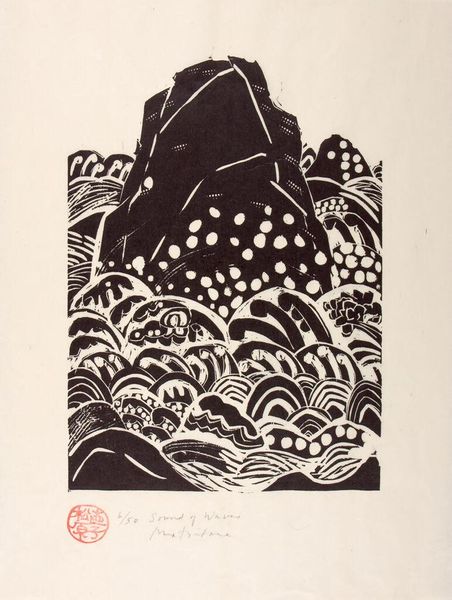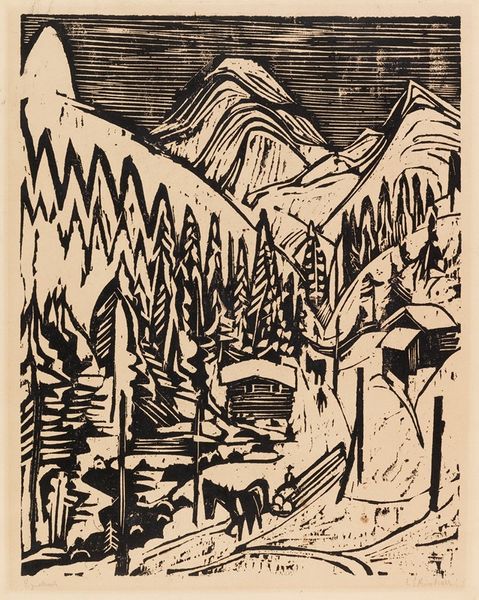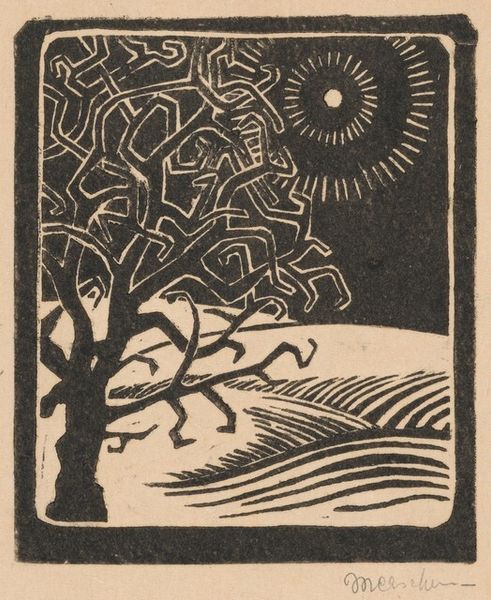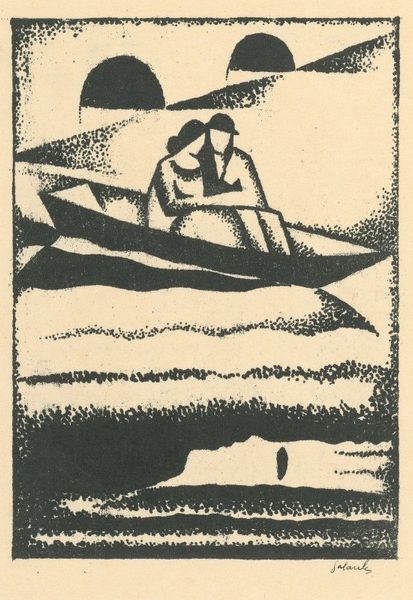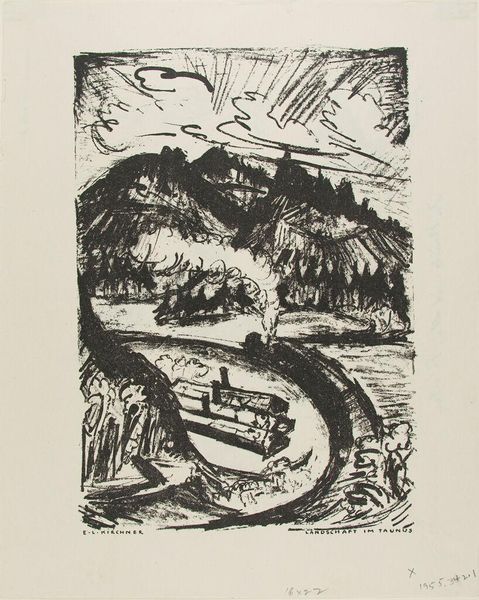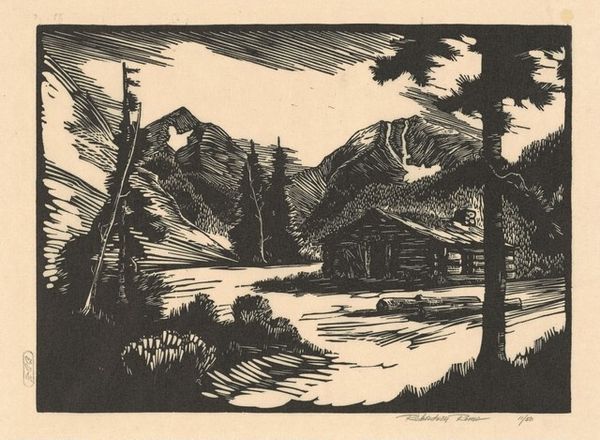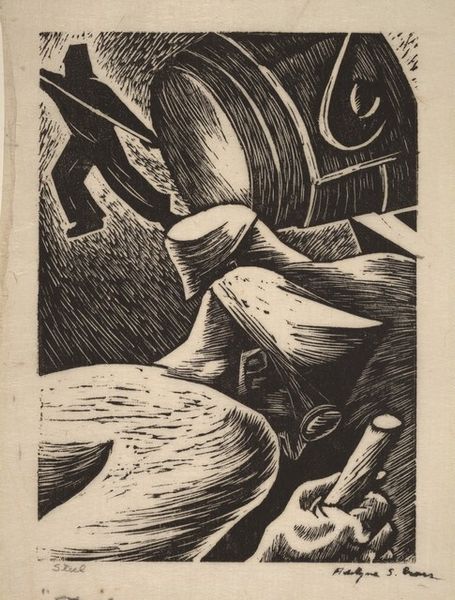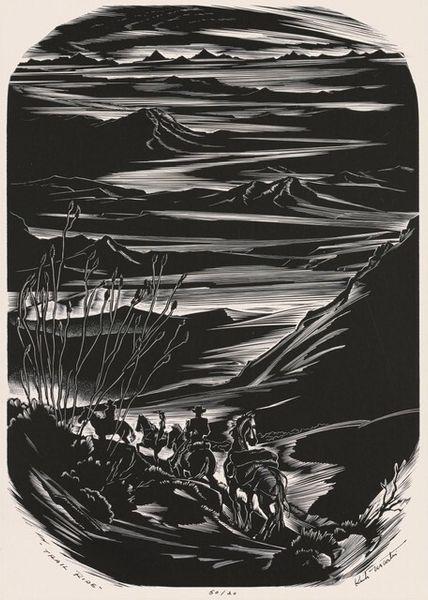
print, woodcut
# print
#
landscape
#
geometric
#
expressionism
#
woodcut
#
line
#
northern-renaissance
Copyright: Public Domain: Artvee
Editor: This woodcut print, "Autumn II," was created by Mikuláš Galanda in 1924. There's something so striking about its use of bold, graphic lines to depict this landscape. The mountains feel so monumental, and yet, the whole scene is quite stark and almost bleak. What's your take on this piece? Curator: It’s fascinating to see Galanda engaging with landscape through such a graphic medium. Prints, especially woodcuts, played a key role in disseminating imagery to a wider audience, shaping perceptions of nature and national identity, particularly in interwar Europe. Notice how Galanda simplifies the mountains, reducing them to these almost theatrical, geometric forms. This abstraction moves away from realistic representation. Editor: The theatrical element you mentioned – it’s like stage scenery! Does this connect to a broader trend in how art was being used at the time? Curator: Absolutely. After the First World War, many artists sought new ways to express the collective experience of trauma and change. Abstraction, as seen here, became a powerful tool. Galanda was interested in expressionism. This is the search for authentic emotion in art, stripped bare of excessive ornamentation, like a modern take on Northern Renaissance landscape prints. He found those qualities through simplified imagery and subject. How does that lens affect how you view "Autumn II?" Editor: It makes me reconsider my initial "bleak" reaction. Maybe it’s not just bleak, but a raw, honest response to the landscape and maybe the overall feel of the time? I also see more clearly the political statement of cultural heritage within this depiction of his nation’s landscape. Curator: Precisely. Art like this actively constructs and reflects its cultural moment. We begin to see the artist's connection to place, his nation's evolving identity and how the art disseminates to a broader public to instill such connection. Editor: That really opens up a new way to understand not only this piece but also art's role in society. Curator: It illustrates art's historical power to help to create a vision of our world through powerful simplified imagery.
Comments
No comments
Be the first to comment and join the conversation on the ultimate creative platform.
